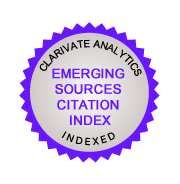2024 Call for Papers:
Current Trends in Translation Teaching and Learning E (CTTL E) is a double-blind refereed open access journal that explores a variety of issues related to translation teaching and learning. We seek qualitative and quantitative research articles that are relevant to this subject. The publication is indexed in the ESCI of the Web of Science and is available via EBSCO and is free online via our website. The length of papers should be around 2500 to 6000 words.
The deadline for submission of articles for 2024 is May 15, 2024.
Dr. Ping Yang from Western Sydney University is Associate Editor. Please send your manuscripts and enquiries to p.yang [@] westernsydney.edu.au
Dr. Marga Navarrete from University College London is Book Review Editor. Please send your book reviews and enquiries to m.navarrete [@] ucl.ac.uk
Mikel Garant
Editor in Chief
Publication: CTTL E will have rolling publications. So, we will publish articles as soon as they pass review and the final approved version is camera ready and is fit for publication.
Style: Submissions should be in APA 7 style in A4 with no cover page. Also, it should be single spaced. For details on correct APA Style see the Purdue Online Writing Library APA Formatting and Style Guide (7th Edition). Editions from 2023 and before are in A5.
The CTTL E review form available here
Mailing address:
Professor Mikel Garant
Editor in Chief
Current Trends in Translation Teaching and Learning E
Professor, Beijing Institute of Technology
Beijing Institute of Technology in Zhuhai
No.6 Jinfeng Rd. Tangjiawan, Zhuhai. Guangdong Province, P.R.C.
Tel +86 131 1231 7770
Wechat: USAFinn
Docent, University of Helsinki
EU mailing Address:
Lienalantie 5 A 19
01340 Vantaa, Finland
Current Trends in Translation Teaching and Learning E (CTTL E) is a double-blind refereed open access journal that explores a variety of issues related to translation teaching and learning. We seek qualitative and quantitative research articles that are relevant to this subject. The publication is indexed in the ESCI of the Web of Science and is available via EBSCO and is free online via our website. The length of papers should be around 2500 to 6000 words.
The deadline for submission of articles for 2024 is May 15, 2024.
Dr. Ping Yang from Western Sydney University is Associate Editor. Please send your manuscripts and enquiries to p.yang [@] westernsydney.edu.au
Dr. Marga Navarrete from University College London is Book Review Editor. Please send your book reviews and enquiries to m.navarrete [@] ucl.ac.uk
Mikel Garant
Editor in Chief
Publication: CTTL E will have rolling publications. So, we will publish articles as soon as they pass review and the final approved version is camera ready and is fit for publication.
Style: Submissions should be in APA 7 style in A4 with no cover page. Also, it should be single spaced. For details on correct APA Style see the Purdue Online Writing Library APA Formatting and Style Guide (7th Edition). Editions from 2023 and before are in A5.
The CTTL E review form available here
Mailing address:
Professor Mikel Garant
Editor in Chief
Current Trends in Translation Teaching and Learning E
Professor, Beijing Institute of Technology
Beijing Institute of Technology in Zhuhai
No.6 Jinfeng Rd. Tangjiawan, Zhuhai. Guangdong Province, P.R.C.
Tel +86 131 1231 7770
Wechat: USAFinn
Docent, University of Helsinki
EU mailing Address:
Lienalantie 5 A 19
01340 Vantaa, Finland
